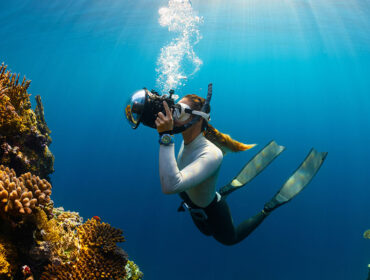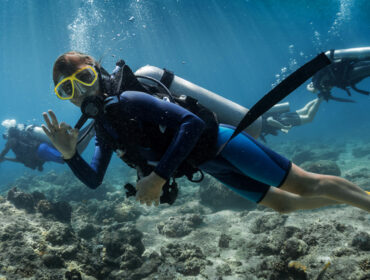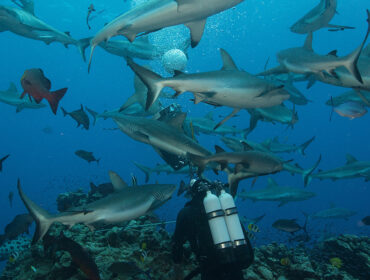As your primary way of breathing underwater and essentially your lifeline, Scuba regulators are one of the most essential pieces of equipment used in scuba diving. So, what do you do if it happens to fail on you? That’s where an octopus, or spare regulator, as it is also known, comes in. As your most important piece of scuba safety gear, a spare regulator or octopus can come to your aid or your buddy’s aid as a backup air supply source underwater. So, how do you choose this crucial equipment when buying your scuba kit?
To know what to look for in an Octopus, it’s good to know the parts that make up an octopus and the features you can expect. Like a traditional regulator, an octopus consists of a first stage (frequently purchased separately), a brightly colored second stage, and a long air hose.
Parts of an Octopus/ Spare Reg
1st Stage vs. 2nd Stage
The first stage attaches to the diver’s tank via a yoke or DIN fitting. It regulates the air pressure as the air exits the tank before entering the air hose. The second stage contains the mouthpiece and purge valve; its purpose is to deliver the air into the diver’s mouth and remove any waste (air or other objects) as needed.
Hose
Octopus hoses are usually longer than a diver’s primary regulator hose. This is because the octopus may be used by your buddy, who will be a slightly greater distance from your tank than you are.
Features of an Octopus/ Spare Reg
Swivel
Many octopuses offer a relatively free swivel motion, which allows the diver in need to position the regulator comfortably. This also permits your buddy to breathe through your octopus regardless of whether he/she is behind you, in front of you, or next to you. Some octopuses can also be used equally well right-side up or upside down. This allows you to assist your friend, even if they are below you.
Purge Button/Exhaust Valve
The second stage’s exhaust valve is a one-way valve that allows the diver’s exhaled air to escape from the regulator. It is where the bubbles exit the mouthpiece.
The purge button allows the diver to force air from his/her scuba tank through the regulator to clear any water that may have inadvertently entered the 2nd stage. This button should be simple to manipulate, even when wearing thick dive gloves. It should also only require pressure from one finger to perform the purge successfully.
Mouthpiece
Your octopus’ mouthpiece is a more crucial piece of equipment than most people believe. Mouthpieces are typically made from hypoallergenic silicone, a pliable yet sturdy material. Increasingly, mouthpieces are being touted as ergonomically shaped. This is a significant advantage because it allows your jaw to maintain a natural position, which should reduce your chances of experiencing post-dive jaw pain.




